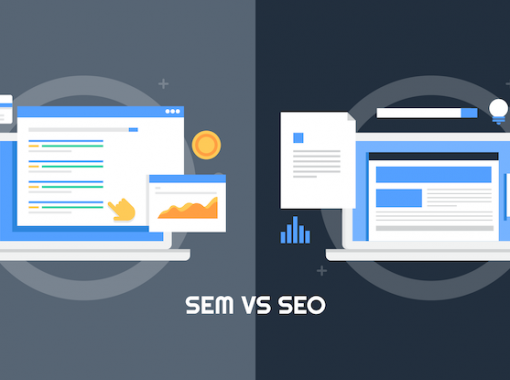
In the world of digital marketing, the differences between Search Engine Optimization (SEO) and Search Engine Marketing (SEM) may be subtle, but understanding the unique features of each will support your online marketing strategy. SEO and SEM both work to increase your brand’s visibility in search engines, but how they accomplish that goal differs.
SEO focuses on bettering your brand’s position in organic search results, while SEM uses paid advertisements like Pay-Per-Click (PPC) and SEO strategies to increase your website’s visibility in search results.
Google’s search results are presented in two different ways: organic results (SEO) and paid results (SEM). The information labeled as “Ad” on your Google search — typically at the top or bottom of the page — falls under SEM. The other search results are organic and are ranked based on several elements. These fall within the realm of SEO.
What Is SEO?
There are multiple steps you can take to improve your SEO, both on your website and other digital platforms. Building an SEO strategy typically consists of two overarching categories: on-page SEO and off-page SEO.
As you may have predicted, on-page SEO is the practice of optimizing the individual pages on your website to get them to rank higher in search results and gain more visitors. The webpage content and HTML source code can be optimized to boost SEO. Minor changes like updating a title tag, publishing or updating a blog post, or minimizing custom coding to improve page speed can also enhance optimization.
Off-page SEO includes anything you do to advance optimization efforts of your brand off your website. While much of this SEO strategy may be out of your control, you can take steps to better your off-page results, like sharing your content, encouraging other brands to link to your site, optimizing your social media profiles, and asking for online referrals and reviews.
Simple SEO action items you can take today include:
- Optimizing meta descriptions on webpages
- Optimizing page titles
- Keyword research
- Content creation with relevant keywords
- Compress images
- Claim Google My Business
- Inventory site and content for mobile-friendliness
These best practices will help search engines better determine the type of content on your page so they can place your website in front of relevant users. More than a quarter of online users click on the first organic search result, so investing time in SEO offers the opportunity for a big payoff. SEO actions aren’t a one-and-done practice, so the key to continuously improving your online position and holding the strong gains you make is turning those actions into standard practices.
What Is SEM?
Building an SEM strategy inherently includes SEO but it also has a strong concentration on paid advertisement aimed at a target audience.
Some of the most popular SEM strategies include:
- Pay-Per-Click (PPC)
- Local SEO
- Social media advertising
- Remarketing
- Google ads
Paid search advertising allows you to purchase ad space in the search engine results. Rather than gaining a top organic spot in the results list, your website will appear before the organic results because you’ve paid for the placement.
One of the primary benefits of a strong SEM strategy is you can see measurable results nearly immediately. You are in control of the campaigns, so depending on the amount of money you invest, when the ads are displayed, and the target audience, you may begin to see conversions as soon as the ad is live.
Comparatively, SEO takes time to manifest into measurable conversions. You must build your website’s trustworthiness with Google and its users before you experience major advances in organic search results.
SEO or SEM?
Long-lasting results are typically experienced with a concentration on SEO. Websites that find strong organic placement in search results, thanks to researched keywords, receive an ongoing stream of web traffic. Strong SEO means your business hours run 24/7 for online customers. To keep up with the demands of your digital consumers, you need a telephone marketing plan that promotes an “always open” image. A vanity phone number or custom 1-800 phone number makes your brand more memorable.
The use of paid advertisements to gain traffic is a useful part of SEM, but the uptick in online orders can quickly dwindle when the campaign ends. Incorporating a strong SEO strategy into your SEM plan gives you a steadier platform to find success with both.
For brands that are just beginning to build an online presence, investing in SEM will offer fast results. To create a long-lasting business that resonates strongly with a targeted audience, SEO is where you should make your investment. As you build your custom digital marketing plan, be sure to include text messaging and a custom phone number as complementary pieces. The plans from 800.com are designed to work with your current marketing efforts to reach your audience and build a loyal customer base.






